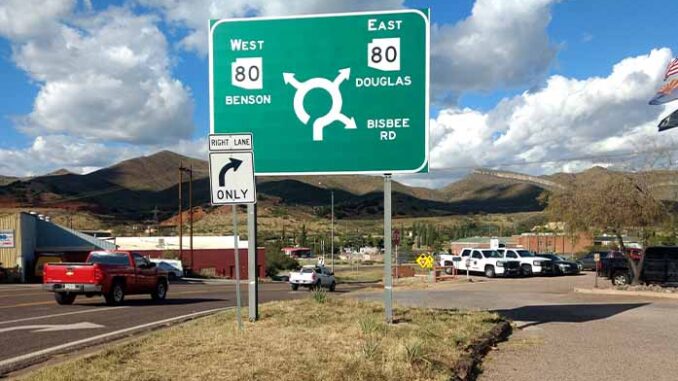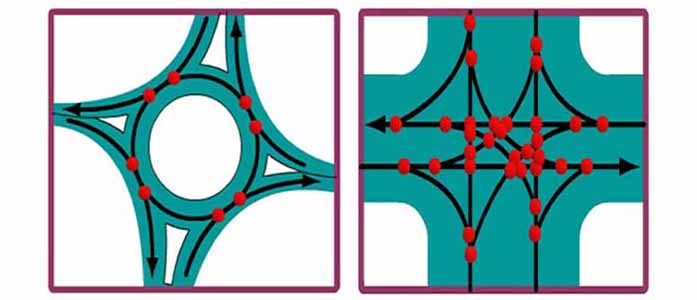
The modern roundabout may cause consternation for many drivers, especially those unfamiliar with the traffic control option. But they result in a 90 percent reduction in fatal crashes and a 75 percent reduction in injury crashes, according to the Arizona Department of Transportation (ADOT).
The four-way roundabout is effective because it reduces the number of vehicle-to-vehicle “conflict points” to 8 instead of the 32 conflict points found in a standard stoplight-controlled four-way intersection. It also slows down vehicles to about one-half of the speed drivers would travel in a stoplight controlled four-way intersection.
There are also other benefits, including a keeping traffic flowing better, saving money on gas from being stopped at lights, and reducing pollution. It is also much easier for a driver to correct their direction due to a missed turn.
“If you miss your turnoff, you can simply circle back,” explained Laurie Merrill, an ADOT spokeswoman. “You know, like Chevy Chase’s character did in ‘National Lampoon’s European Vacation’ where he circled so much around a London roundabout that everyone in the car fell asleep.”
But in all seriousness, Merrill recently shared statistics from the Insurance Institute of Highway Safety which shows roundabouts not only save drivers from serious injury and death, but also provide a safer environment for pedestrians. According to the IIHS, there is a 30 to 40 percent reduction in vehicle vs. pedestrian crashes due to crossing fewer lanes of traffic compared to a traditional straight-line intersection.
And if a vehicle v. pedestrian (or bicycle) collision occurs, it is often less serious because roundabouts typically have a 15 to 25 mph speed limit.
Yet despite its safety selling points, roundabouts continue to be underutilized in the United States, according to the Federal Highway Administration. There are currently less than 7,500 roundabouts in the U.S., of which roughly 80 in Arizona. A dozen of those are in the Sedona Oak / Creek Canyon area, according to Merrill.
By comparison, France -a country just slightly larger in size to Arizona and Nevada combined- utilizes about 30,000 roundabouts.
A 2003 joint by ADOT and U.S. Department of Transportation noted that the first modern roundabouts in Arizona were constructed at Interstate 17 and Happy Valley Road. Shortly after that project, ADOT replaced a dangerous old style traffic circle in Bisbee with a roundabout to control traffic in an area where three state highways meet.
Traffic circles have similarities to roundabouts, but control traffic differently and more dangerously via a series of “T” intersections which end at the circle. Most traffic circles require drivers in the circle to yield to new vehicles entering the circle, and to change lanes when trying to leave the circle.
But roundabouts operate in a counterclockwise direction, with drivers in the roundabout lanes having the right of way over drivers outside the roundabout. It requires less stopping and less lane changes.
Merrill noted the Federal Highway Administration sponsors a National Roundabouts Week every year in September, and ADOT even has a webpage dedicated to roundabouts which can be found at https://azdot.gov/about/transportation-safety/roundabouts

.
